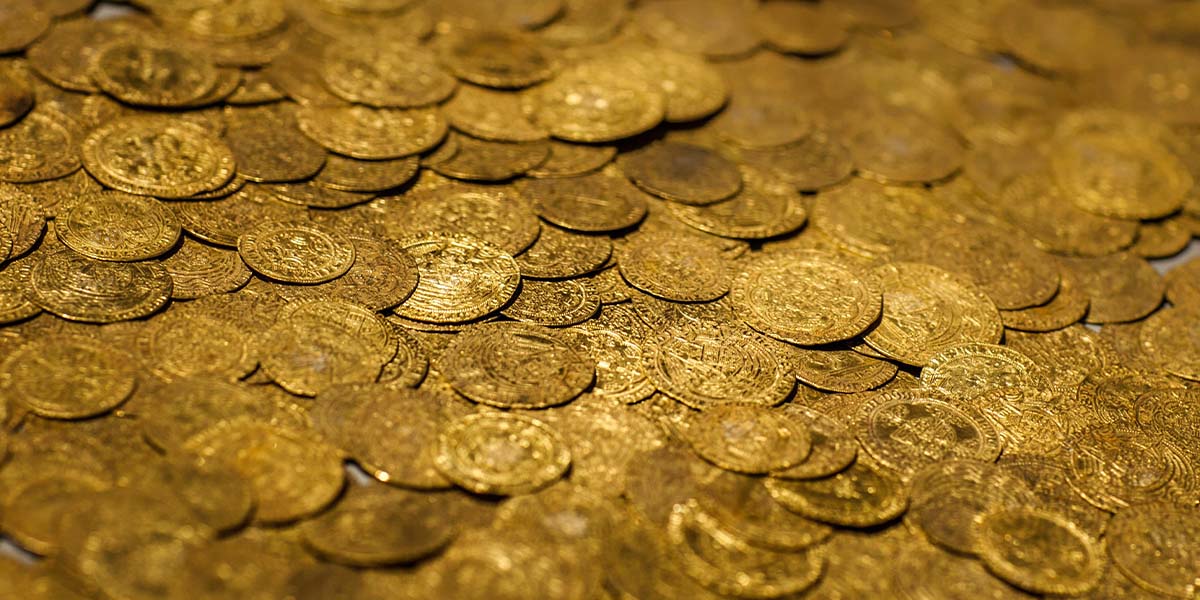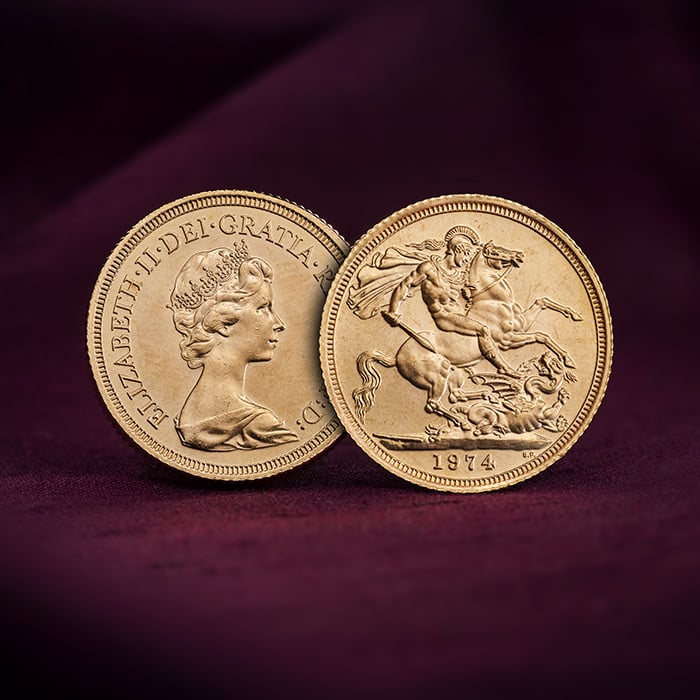Although there were early attempts to introduce a gold penny and a gold leopard, it wasn’t until the reign of Edward III that a gold coin became firmly established as part of British currency.
Gold coinage wouldn’t typically have been used by ordinary working people, who instead used smaller silver denominations, and significant gold coins would have been used by wealthy tradesmen and nobility. The value of gold coins fluctuated through the centuries in relation to the value and availability of precious metals, which often saw the need for new coins of the same lower value as previous denominations. In 1816, an official single gold standard was introduced to prevent such fluctuations.
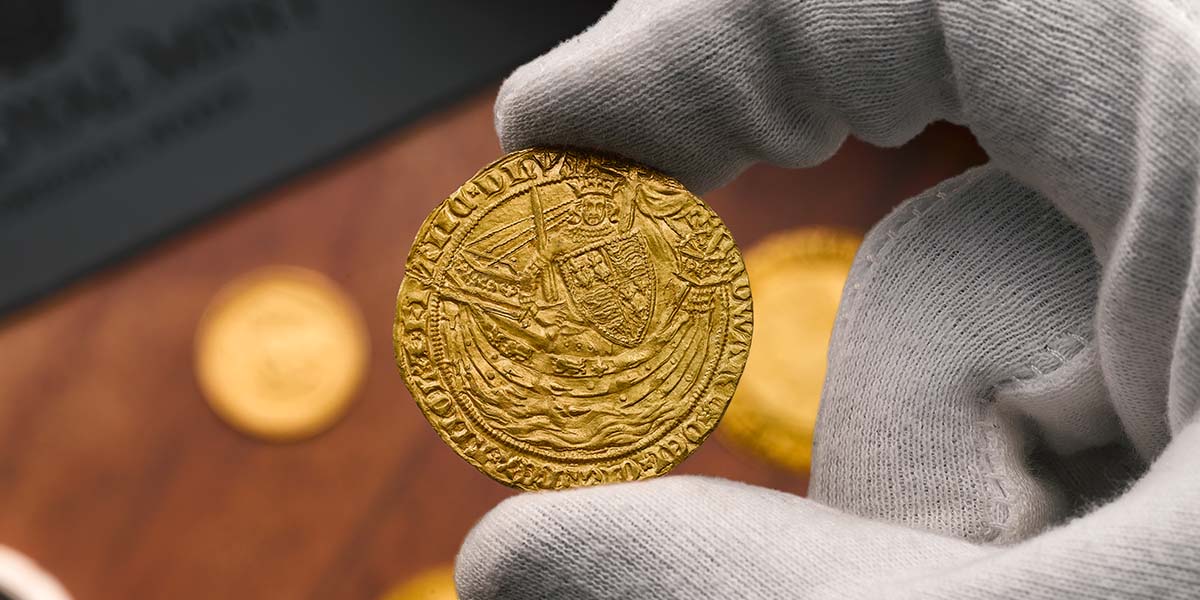
The Noble
Introduced during the reign of Edward III, the noble had a value of six shillings and eight pence or a third of a pound. Throughout its time in circulation, fractionals were also introduced; a half-noble with a value of three shillings and four pence, and a quarter-noble with a value of one shilling and eight pence.
The obverse featured a striking design of the king on a ship holding a shield bearing the king’s Coat of Arms. Designs on the smaller denominations were similar, with the quarter-noble simply displaying the shield. This was the first gold coin to be produced in large numbers and would continue to be struck for circulation for over 100 years.
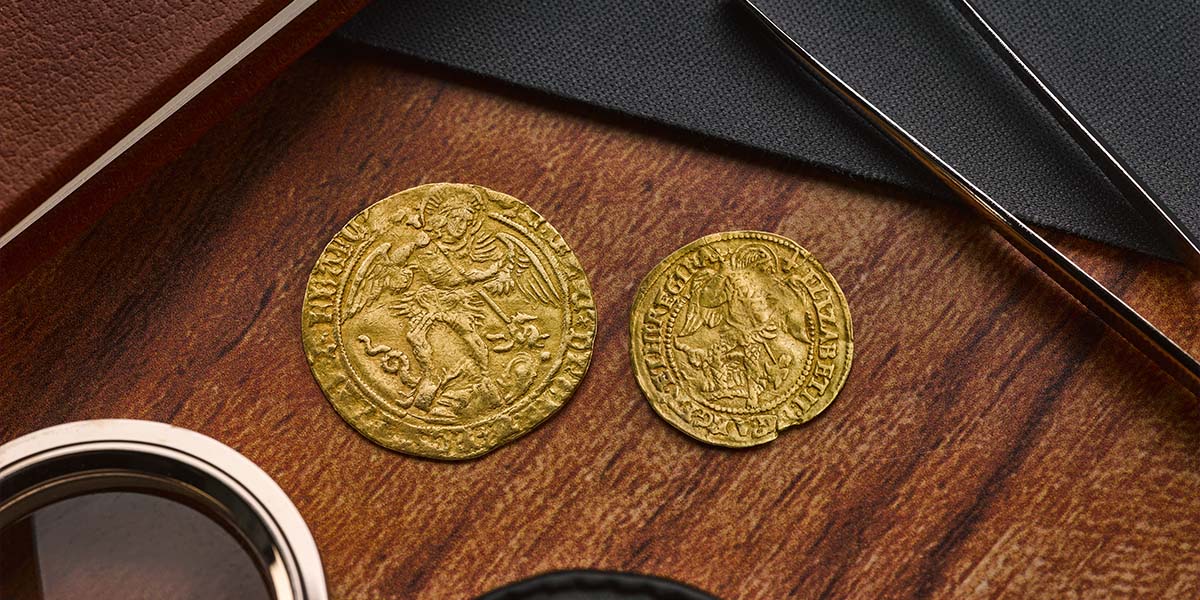
The Angel
After the value of the noble fluctuated during the reign of Edward IV, a new gold coin with the same value of six shillings and eight pence was required. The angel was produced to replace the noble, with half-angels also produced around the same time with a value of three shillings and four pence.
The obverse of the coin depicted the archangel Michael slaying a dragon representing the devil, which gave the denomination its name. Different designs appeared across the denomination and its fractionals throughout the time it was in circulation, but this religious iconography saw it become important in the popular consciousness. It was even thought that wearing the angel as a protective talisman could help to prevent illness, a tradition that evolved from the ‘royal touch’ ceremony.
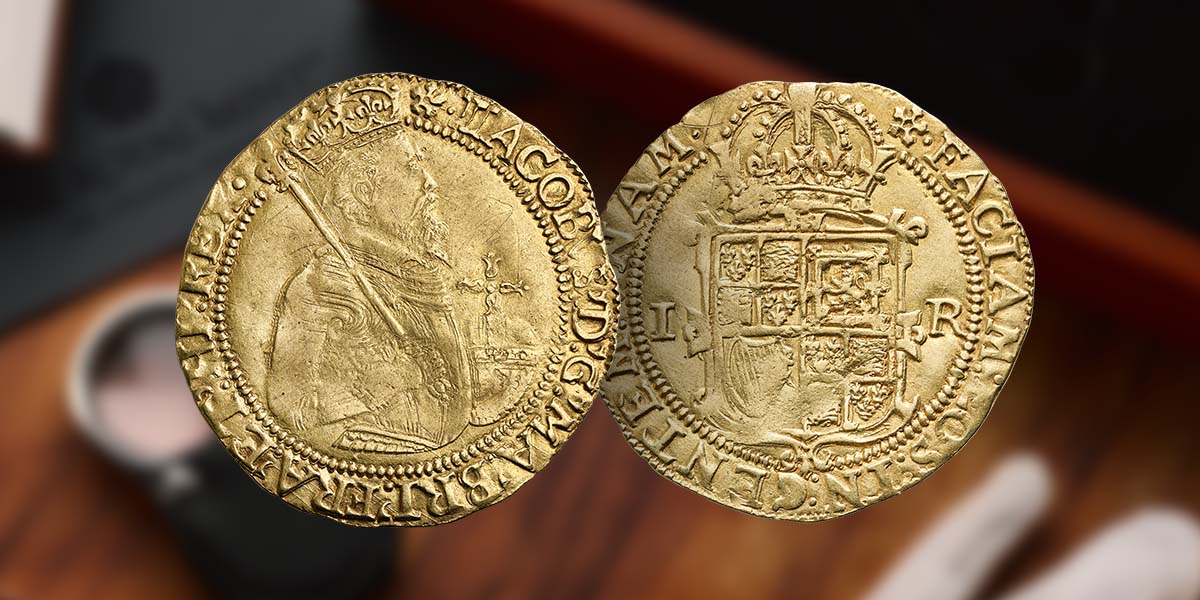
The Unite
James I had an ambition of uniting the English and Scottish crowns when he acceded to the throne, and he used his coinage to further emphasise this. He chose to issue a new gold coin called the unite, which had a value of 20 shillings. One of the first designs also featured a Latin inscription from the Bible, ‘FACIAM EOS IN GENTEM UNAM’, which translates as ‘I WILL MAKE THEM ONE NATION’. However, the inscriptions varied throughout the reigns of different monarchs and across different fractional denominations.
The unite became an important coin for James I and was even struck for the Commonwealth administration. A half-unite was also struck throughout the lifetime of the denomination.
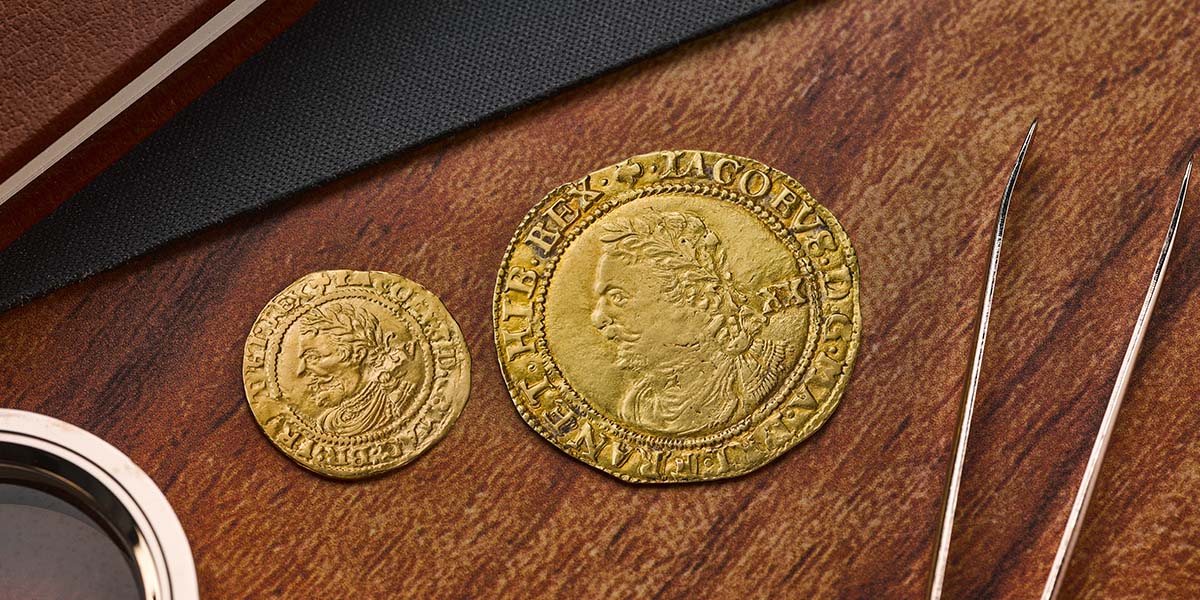
The Laurel
Similar to the angel, the laurel gained its name from a design that appeared on the obverse. Although the laurel initially had the same value as the unite – 20 shillings – these newer gold coins had a lighter weight. As they were to circulate alongside the earlier unite coins, it was decided that a new coinage portrait of James I would help the public to distinguish between the two. This new coinage portrait featured a laureate design similar to the Roman coins of the past, and earned the coin the name of ‘laurel’.
Half-laurels with a value of ten shillings and quarter-laurels with a value of five shillings were also struck during the lifetime of this denomination.
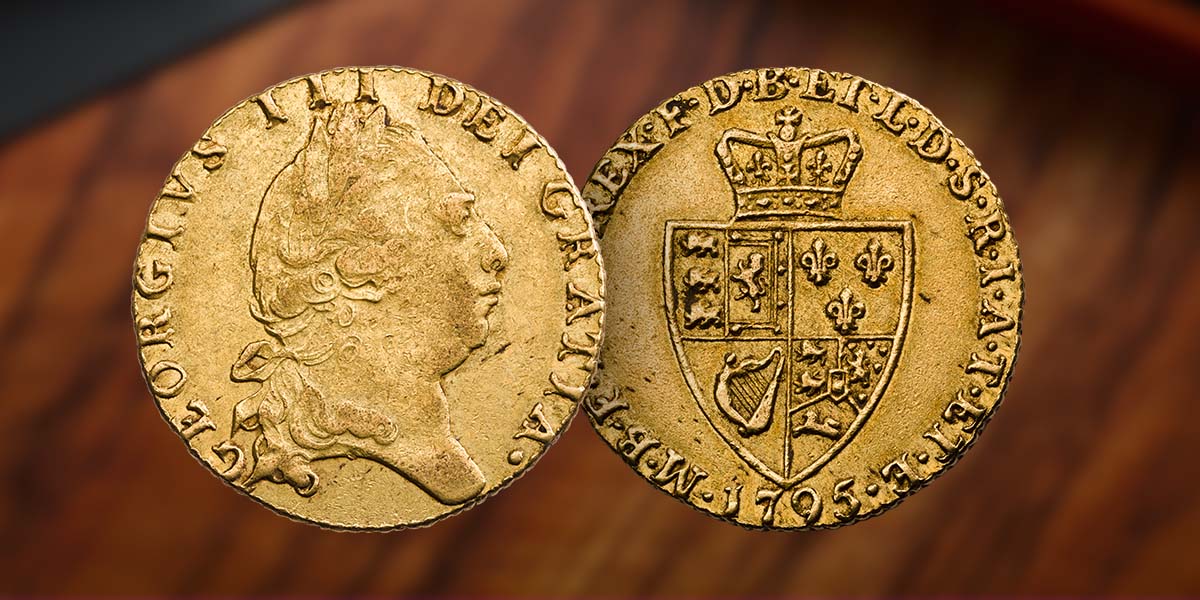
The Guinea
The introduction of new screw presses to The Royal Mint during the reign of Charles II made it possible to create thicker coins featuring higher relief designs. Although this new coin wasn’t given a name when it was produced, it became known as the guinea because most of the gold used to produce it was sourced from the Guinea coast in Africa. This coin went on to dominate the circulating coinage for the next 150 years, and was joined by a five-guinea, two-guinea and half-guinea piece in this time.
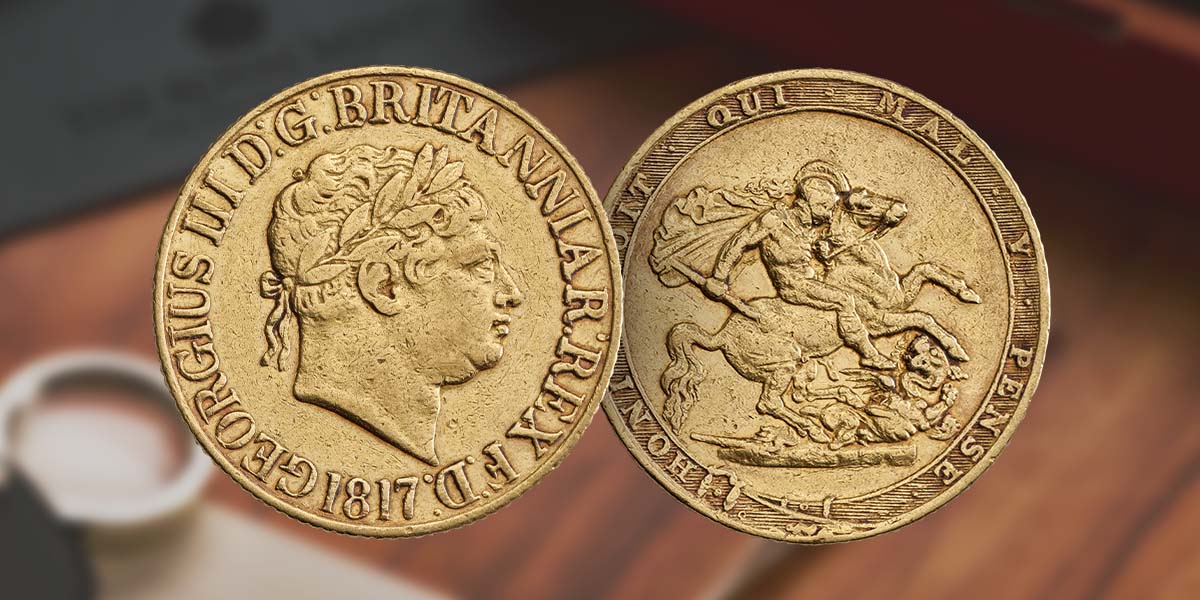
The Sovereign
A Tudor Sovereign was first introduced during the reign of Henry VII. This remained in circulation until the reign of James I, when it was replaced by the unite. Roughly 200 years later, a modern Sovereign was introduced during the reign of George III to replace the guinea. This coin featured a beautiful design of St George and the dragon by the Italian designer Benedetto Pistrucci, which has now become synonymous with The Sovereign family.
Sovereigns continue to be struck in the modern day as bullion coins rather than for circulation, ensuring the lasting legacy of The Sovereign.

